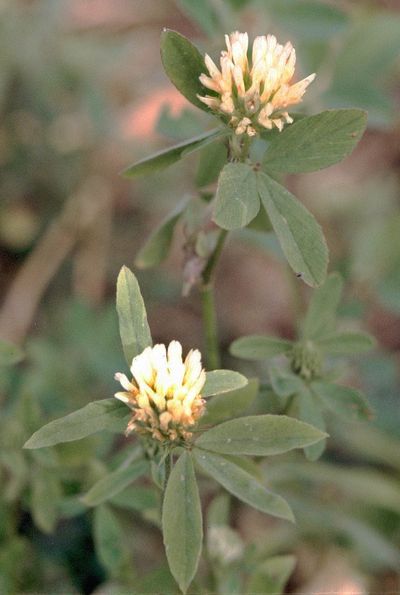What is Berseem Clover?
There are several reasons for growing berseem clover. It is not only an excellent cover crop and forage but is also useful as a weed suppressor, produces prolific seed, can be a perfect companion crop with oats, a green manure, and a nursery plant for alfalfa. Because it cannot withstand most winter temperatures, it is often used as a winter killed crop prior to planting corn. This fast growing plant produces more biomass than comparable legume crops. Berseem clover plants (Trifolium alexandrinum) belong in the legume family, which means their roots bear nodules which fix nitrogen in soil. This is a winning trait when combined with heavy nitrogen feeders like soybeans and corn. This variety produces more seed and foliage than red clover and is tolerant of alkaline soil. Berseem clover resembles alfalfa with fluffy white bloom heads. The stems are hollow and grow up to 2 feet (.61 m.) in length and the leaves are oblong, hairy and lack a watermark. Although native to the Mediterranean, the plant has been introduced to Florida, California and other parts of the southern U.S. It takes between 50 and 90 days to obtain a seed crop, depending what time of year the plants are sown.
How to Grow Berseem Clover
Seeds grown in early fall will mature in just 50 days. It can grow as a summer annual in moist, cool regions and as a winter annual where no frost occurs and winter is long and warm. In order to produce seed, it is suggested that February is the ideal time to sow the clover. Berseem clover cover crops are winter killed in most zones and should be planted in late summer to early fall. The variety tends to grow more quickly in fall and spring. The seed is quite tiny, much smaller than white clover, and is usually broadcast on a firm seed bed. The seeds will germinate with very little moisture. The recommended seeding rate is 20 lbs. per acre (9.07/.406 h.). Seed should be covered by ½ to 1 inch (1 to 2.5 cm.) of soil. Berseem can regrow if mown or grazed provided they are cut before bloom. It is often mowed several times for forage and then finally turned under as a green manure. The cuttings can be harvested 4 to 6 times at 4-week intervals in mid-winter to early summer. Mowing when the plants are 9 inches (23 cm.) high causes them to send out side shoots. In order to produce seed, only three cuttings can take place. When it is cut as silage, the plant causes less ruminant bloating than other clovers. Berseem has the potential to be an important food and cover crop in temperate areas.
